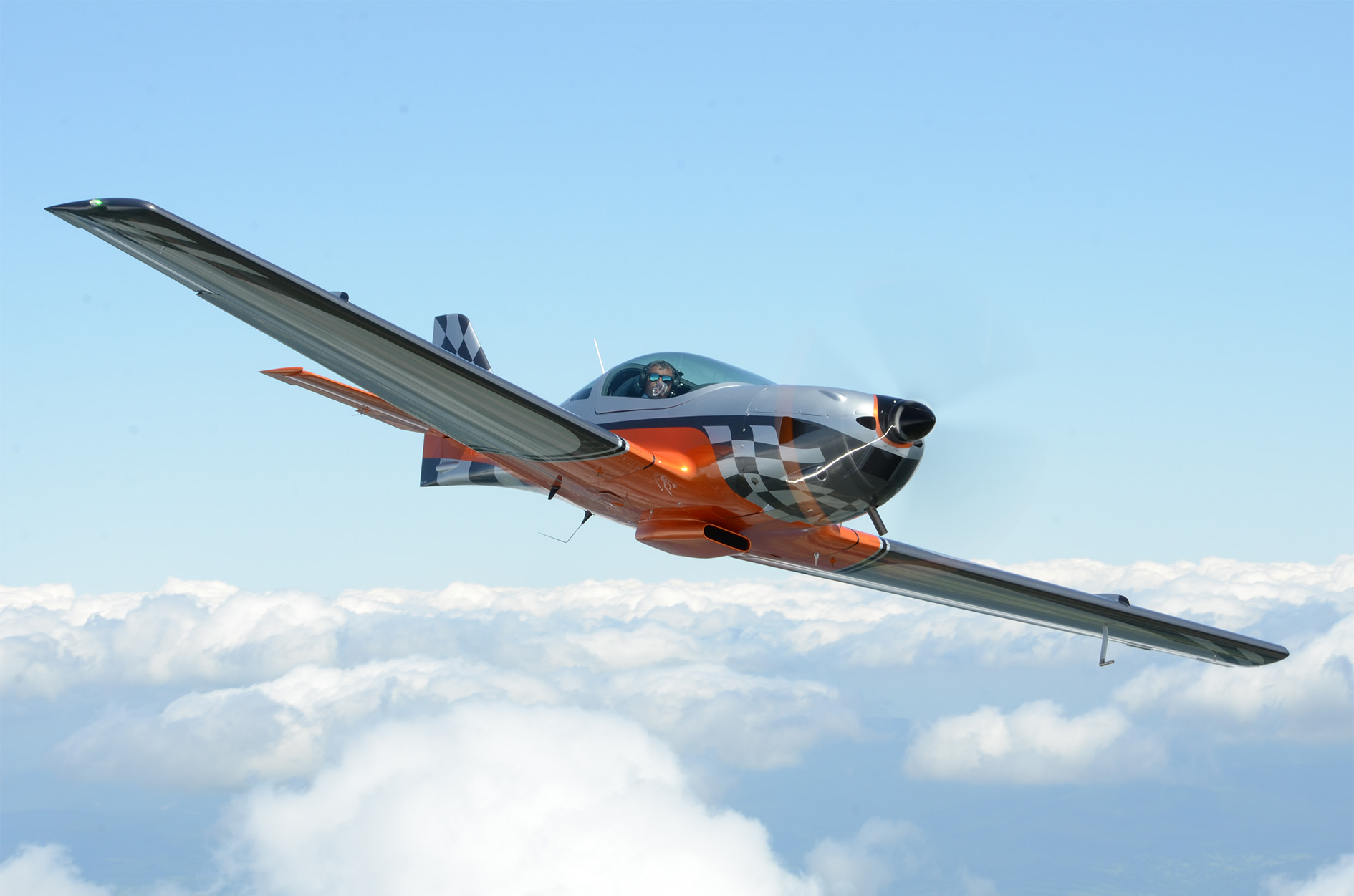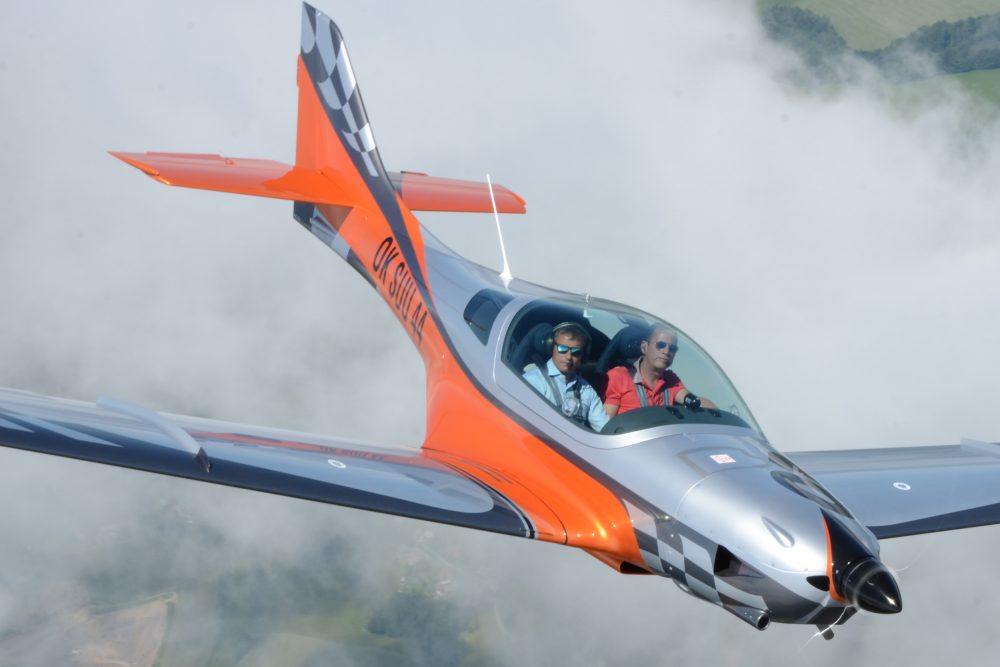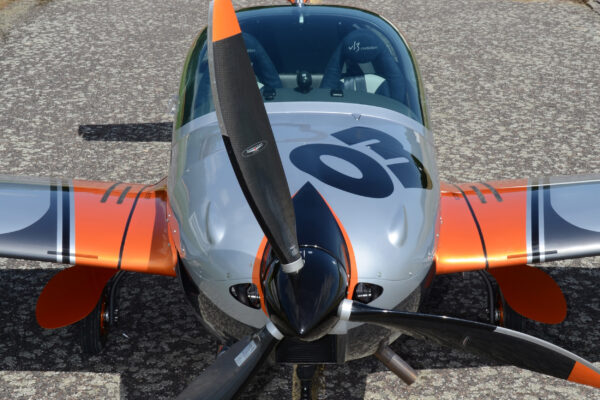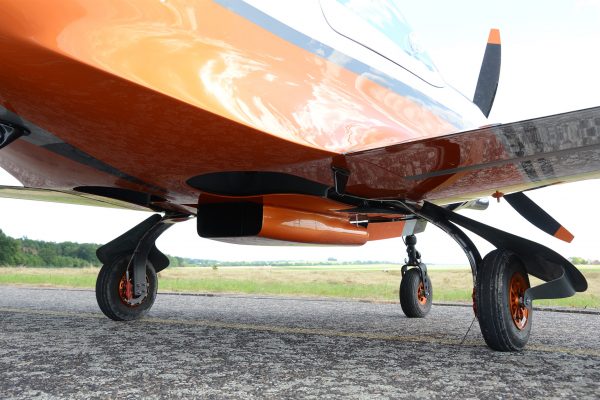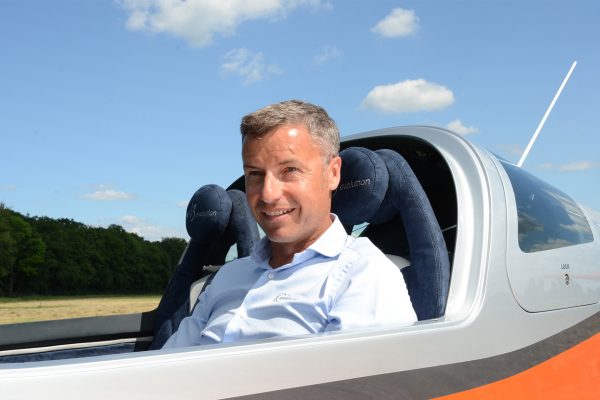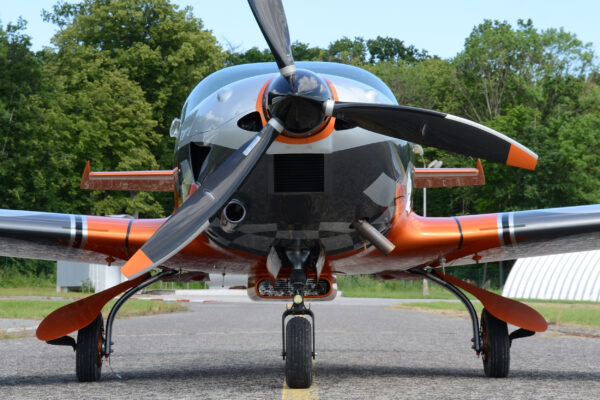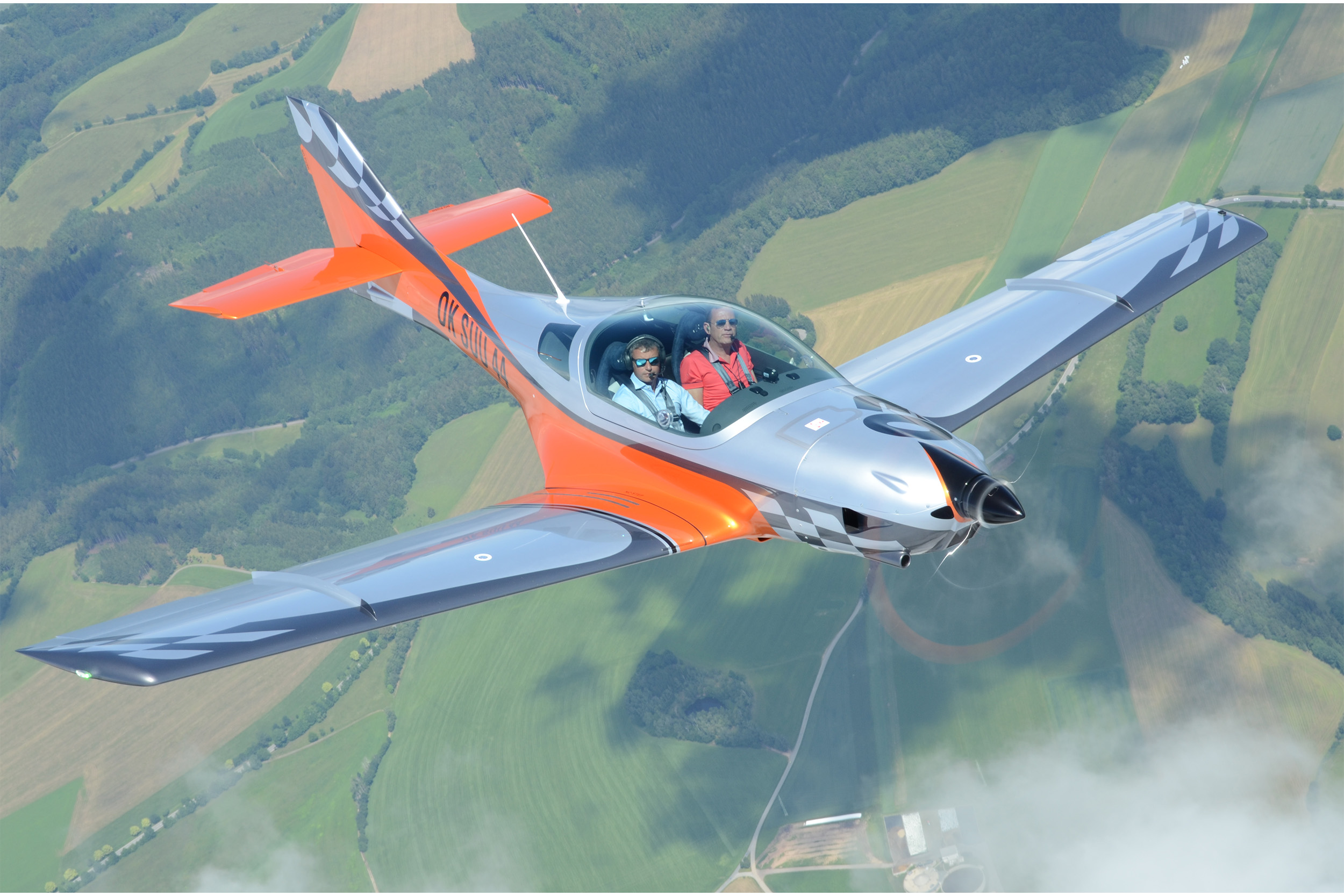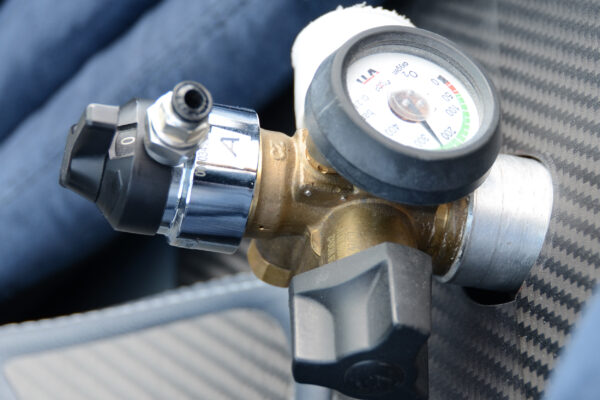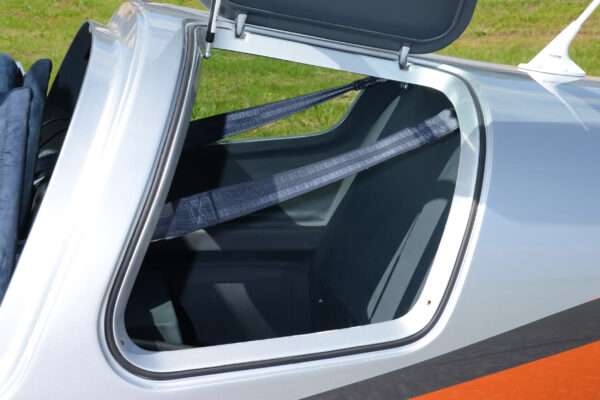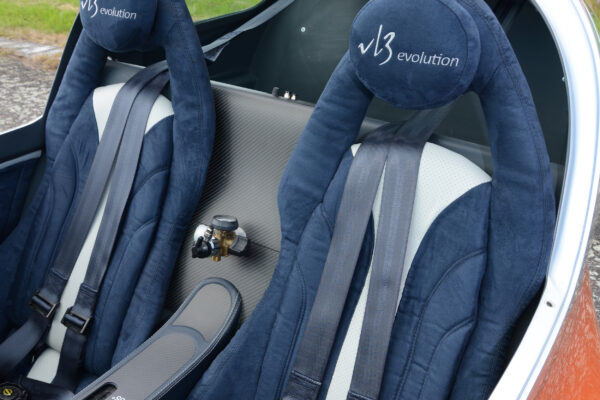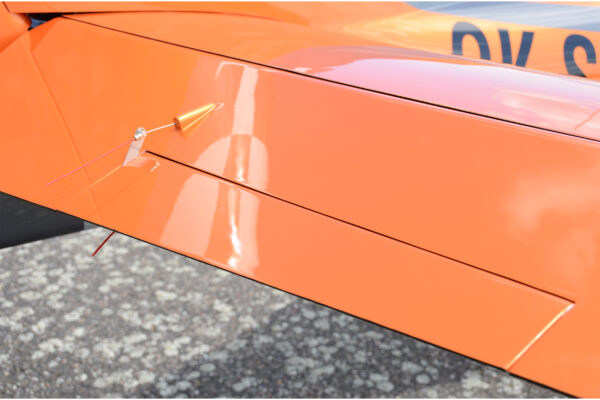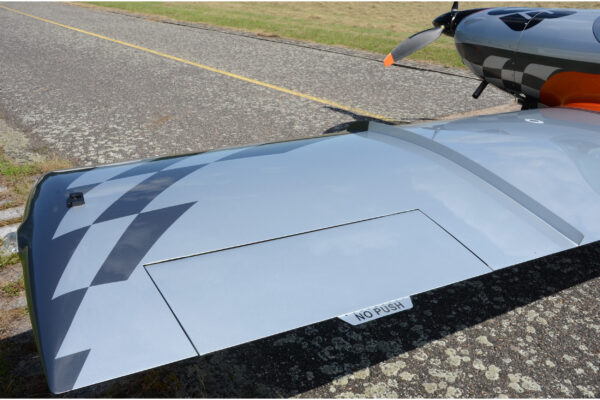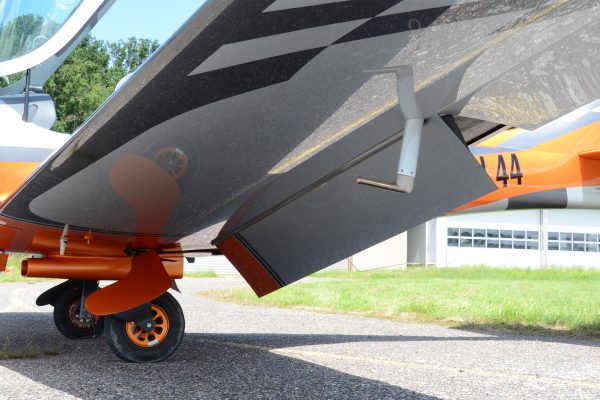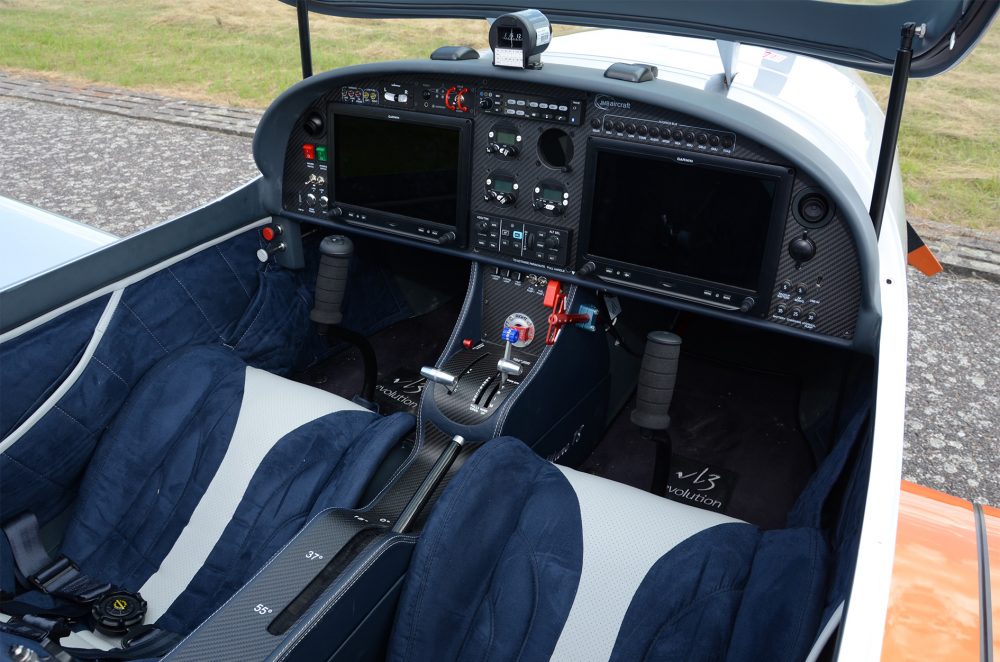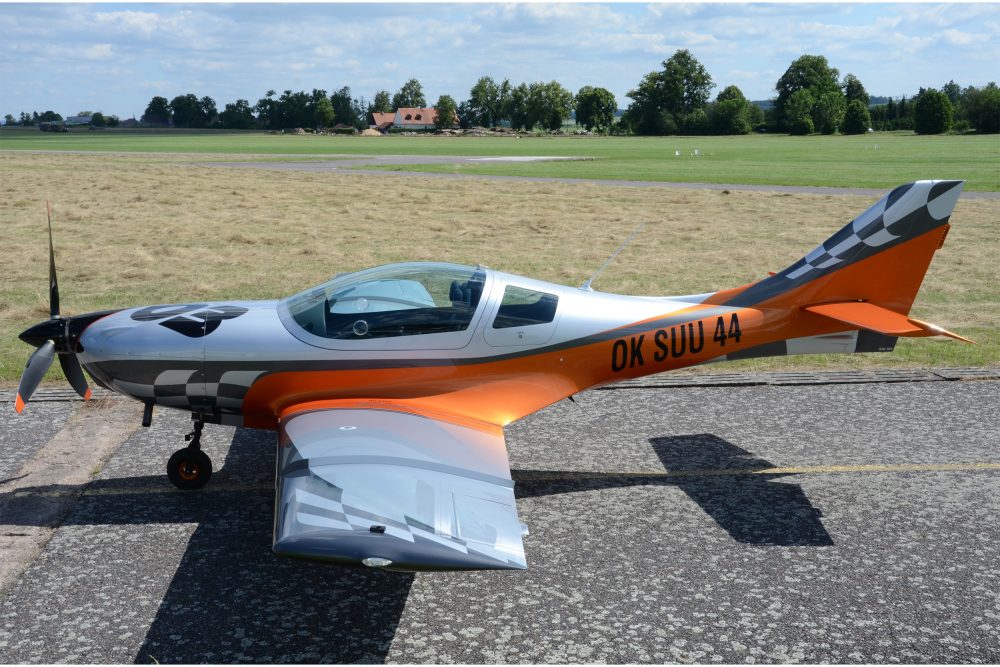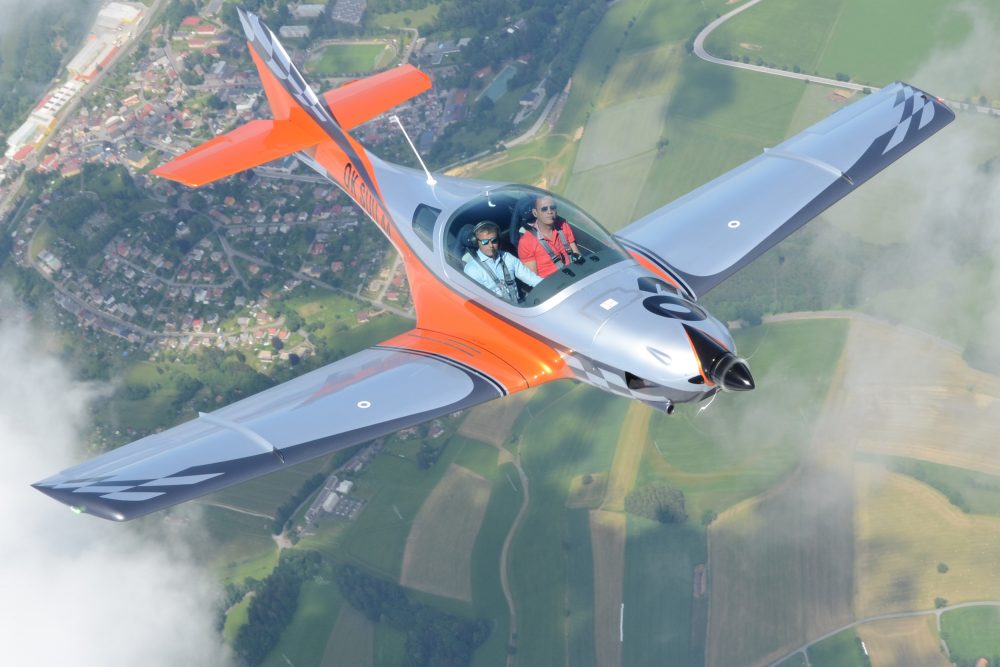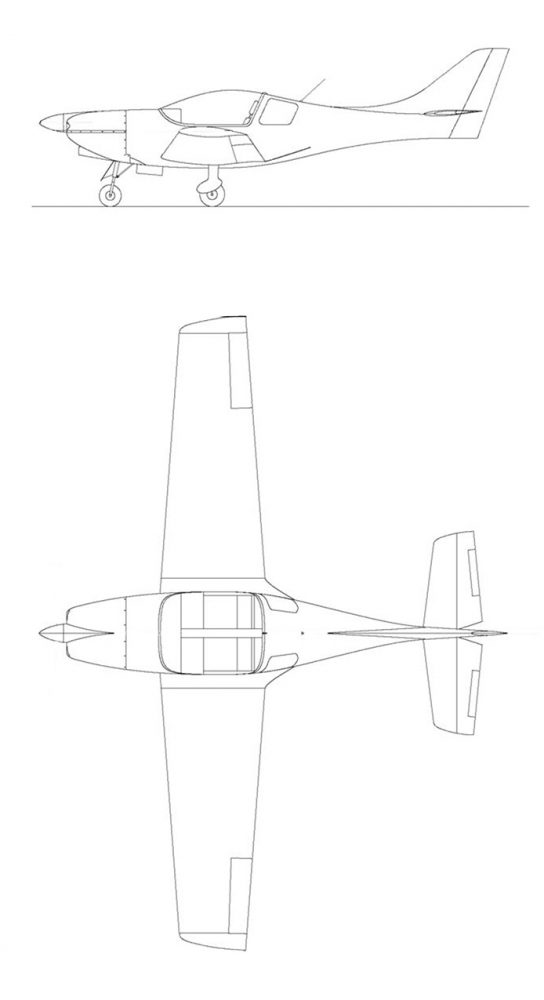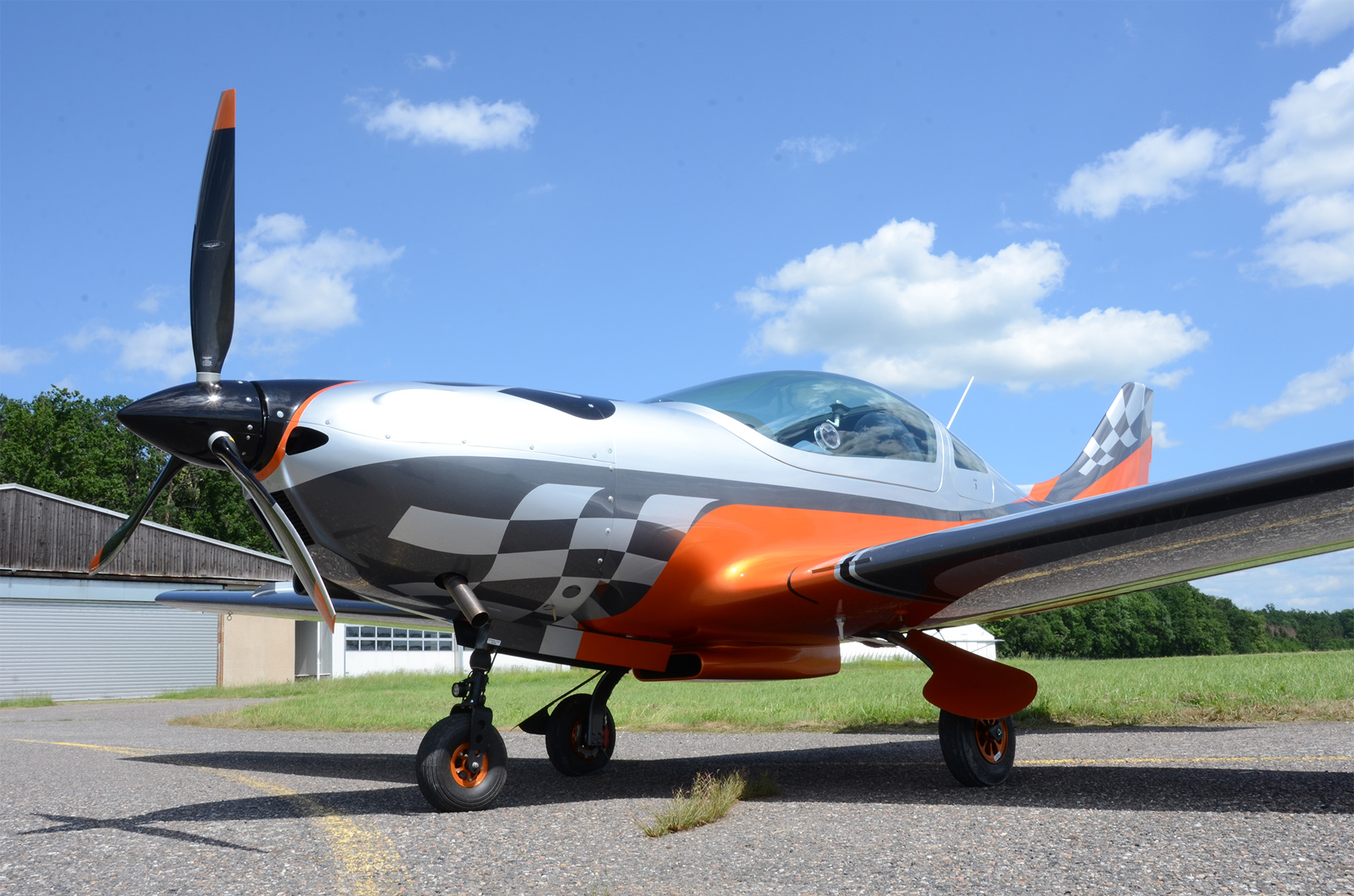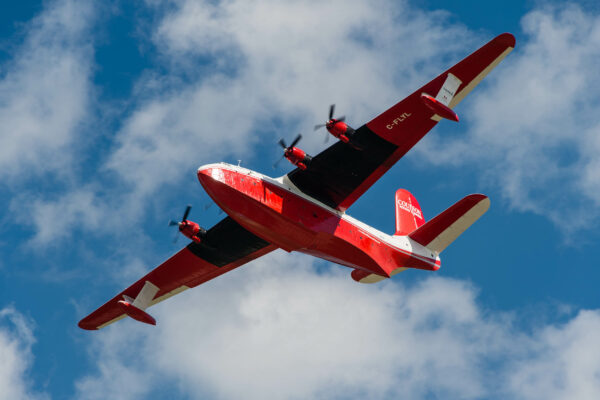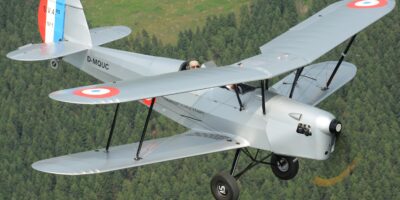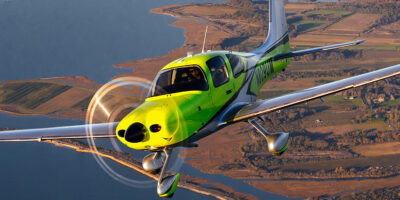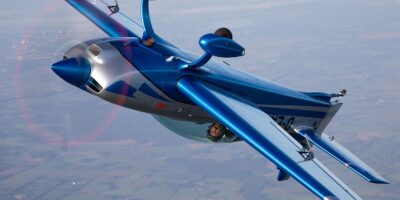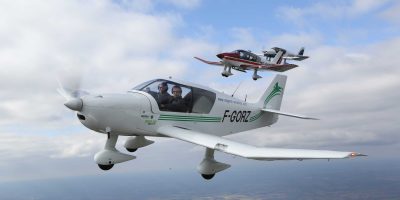Pulling the throttle back gradually, applying 90 per cent power and the speed of the constant-speed prop falls from 5,500 to 5,000 rpm and the speed to 150ktas. In Germany, Jean-Marie says that with ATC clearance he climbs 2,500ft higher to 12,000ft when he’s making the trip back and forth between the factory and his Belgian hometown of Amougies. He has made the trip three times in this particular aircraft and can cover the 485nm in two hours and 50 minutes. In a hurry, 90 per cent power, 5,400rpm, at 12,000ft givres a True Air Speed of190kt and a fuel burn of 35 litres per hour. A more economical cruise at the same altitude, is 50 per cent power, 150kt and 18 litres per hour. Theoretically, with this power setting you can travel 1,084nm with a 30 minute reserve from full tanks. In practice, a typical pilot’s flight will be shorter, as not many of us are comfortable spending over seven hours in the cockpit in one go…
Landing configuration
It takes a while for us to be slow enough to approach the stall in landing configuration. Undercarriage at 80kt, we slow more and gradually add flaps. At 49kt a warning tone sounds. It was not programmed but comes from the angle of attack indicator. “If you want to fly stalls, you have to do it with my test pilot,” says Jean-Marie. At 43kt, the aircraft begins to buffet. I release the back pressure, the stall speed is sufficient for the approval of 600kg ULs in Germany, where 45kt must be demonstrated. With the flaps retracted, we are warned acoustically at 58kt, the stall stops at 55kt. That is still too high for Jean-Marie – he says the angle of the pitot tube is not yet perfected, the aim is 50kt. To improve the stall behaviour with the bigger engine with power on, the 915-powered VL-3 has been fitted with boundary layer wing fences. I’m told the VL-3 with the 115hp Rotax 914, has power-on stall behaviour without boundary layer fences that is routine.


